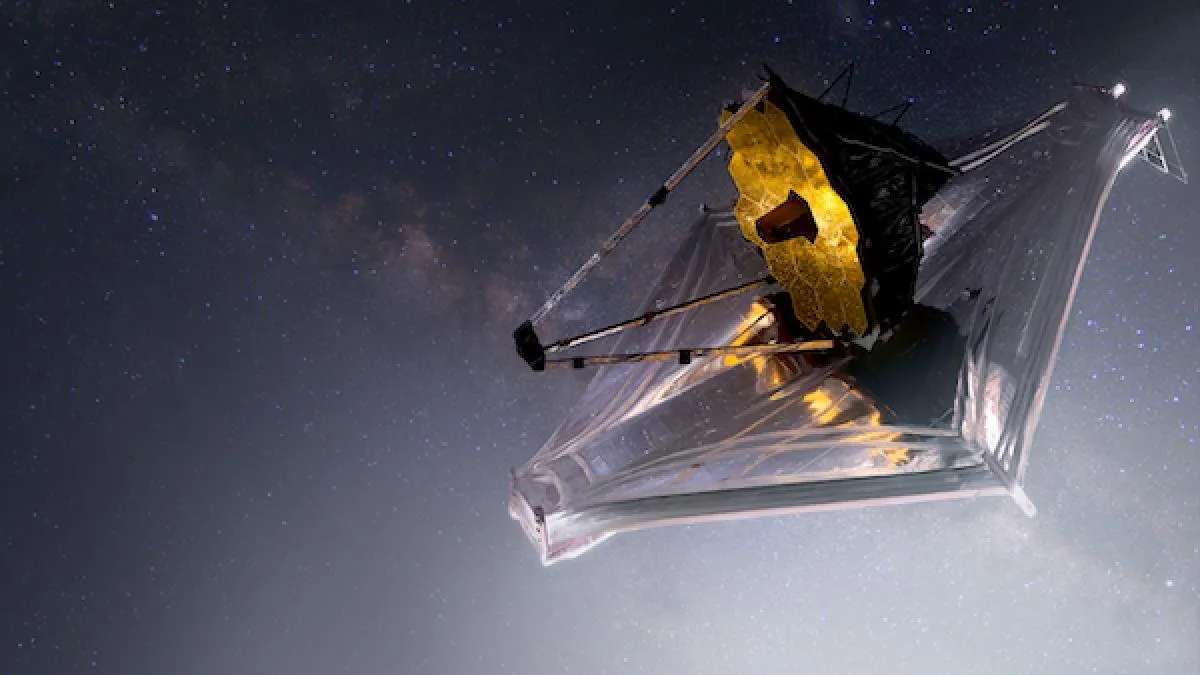
In a remarkable achievement, the James Webb Space Telescope has directly imaged four exoplanets in the stellar system known as HR 8799. These planets, located approximately 130 light-years away in the Milky Way galaxy, are gaseous worlds that provide invaluable insights into planetary formation and composition. Observing such distant worlds is a rarity in astronomy, making this discovery particularly noteworthy.
The recent research, led by William Balmer, an astronomer at Johns Hopkins University, emphasizes the significance of studying these exoplanets to gain a better understanding of our own solar system. "Our hope with this kind of research is to understand our own solar system, life, and ourselves in comparison to other exoplanetary systems," Balmer stated. The research findings were published in The Astrophysical Journal, highlighting the importance of contextualizing our existence within the vast universe.
The four imaged worlds are situated far from their host star, with the closest, HR 8799 e, orbiting at a distance of 1.5 billion miles, which is akin to the distance between Saturn and Neptune in our solar system. In contrast, the furthest planet, HR 8799 b, orbits at about 6.3 billion miles, more than twice the distance of Neptune.
Capturing direct images of exoplanets poses significant challenges, primarily due to the overwhelming brightness of their nearby stars. Traditional observational methods often involve detecting planets when they transit in front of their stars. However, the James Webb Space Telescope has utilized an instrument known as a coronagraph to effectively block out the starlight, allowing astronomers to focus on the planets themselves.
These young and hot exoplanets, each around 30 million years old, exhibit characteristics similar to those of gas giants like Jupiter and Saturn. Researchers believe they formed by creating solid cores that gravitationally attracted surrounding gases, such as carbon dioxide, ultimately leading to their current gaseous states.
By directly observing these exoplanets, astronomers were able to analyze their unique light signals, revealing the presence of gases such as carbon dioxide and carbon monoxide. This analysis not only sheds light on the composition of these distant worlds but also raises intriguing questions about the formation processes of planets in various solar systems.
The James Webb Space Telescope is a collaboration between NASA, the European Space Agency (ESA), and the Canadian Space Agency. Designed to explore the depths of the cosmos, Webb aims to provide unprecedented insights into the early universe and the celestial bodies within our galaxy. Its powerful capabilities include:
Giant Mirror: Webb's mirror, measuring over 21 feet across, is more than two-and-a-half times larger than that of the Hubble Space Telescope, allowing it to capture more light and view distant, ancient objects. Infrared Vision: Unlike Hubble, which primarily observes visible light, Webb is an infrared space telescope. This ability enables it to penetrate cosmic clouds and observe regions that Hubble cannot. Advanced Spectrographs: Webb is equipped with specialized instruments that can identify the molecular composition of exoplanet atmospheres, potentially revealing the presence of essential elements like water, carbon dioxide, and methane.As we continue to explore the universe, the James Webb Space Telescope promises to revolutionize our understanding of exoplanets and their diverse characteristics. With its unmatched capabilities, astronomers hope to uncover new insights about distant worlds and their formation processes, allowing for a deeper comprehension of our own solar system's uniqueness.
Stay informed about the latest developments in space exploration and technology by signing up for Mashable's Light Speed newsletter, where you can find more captivating stories about the cosmos.